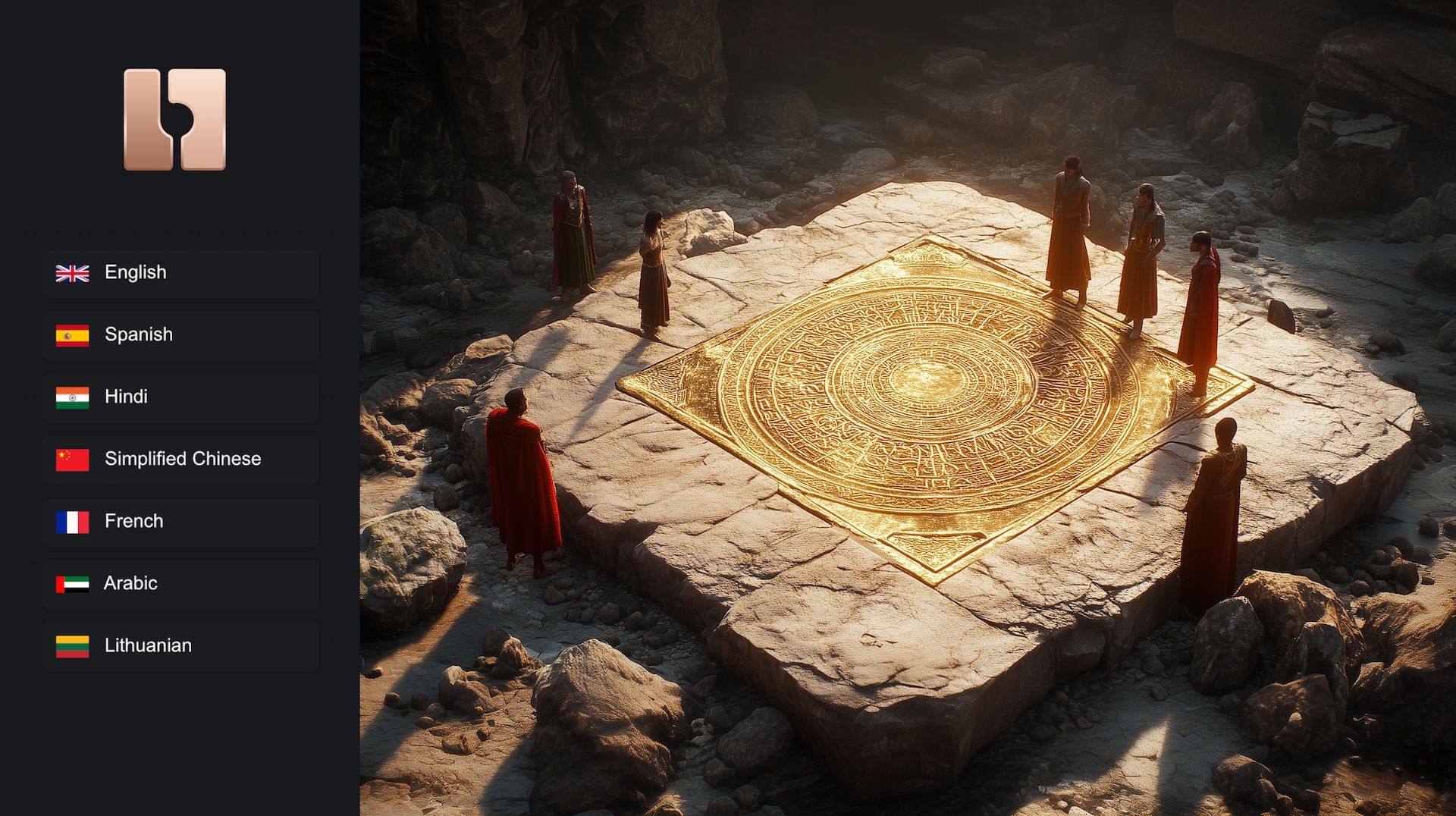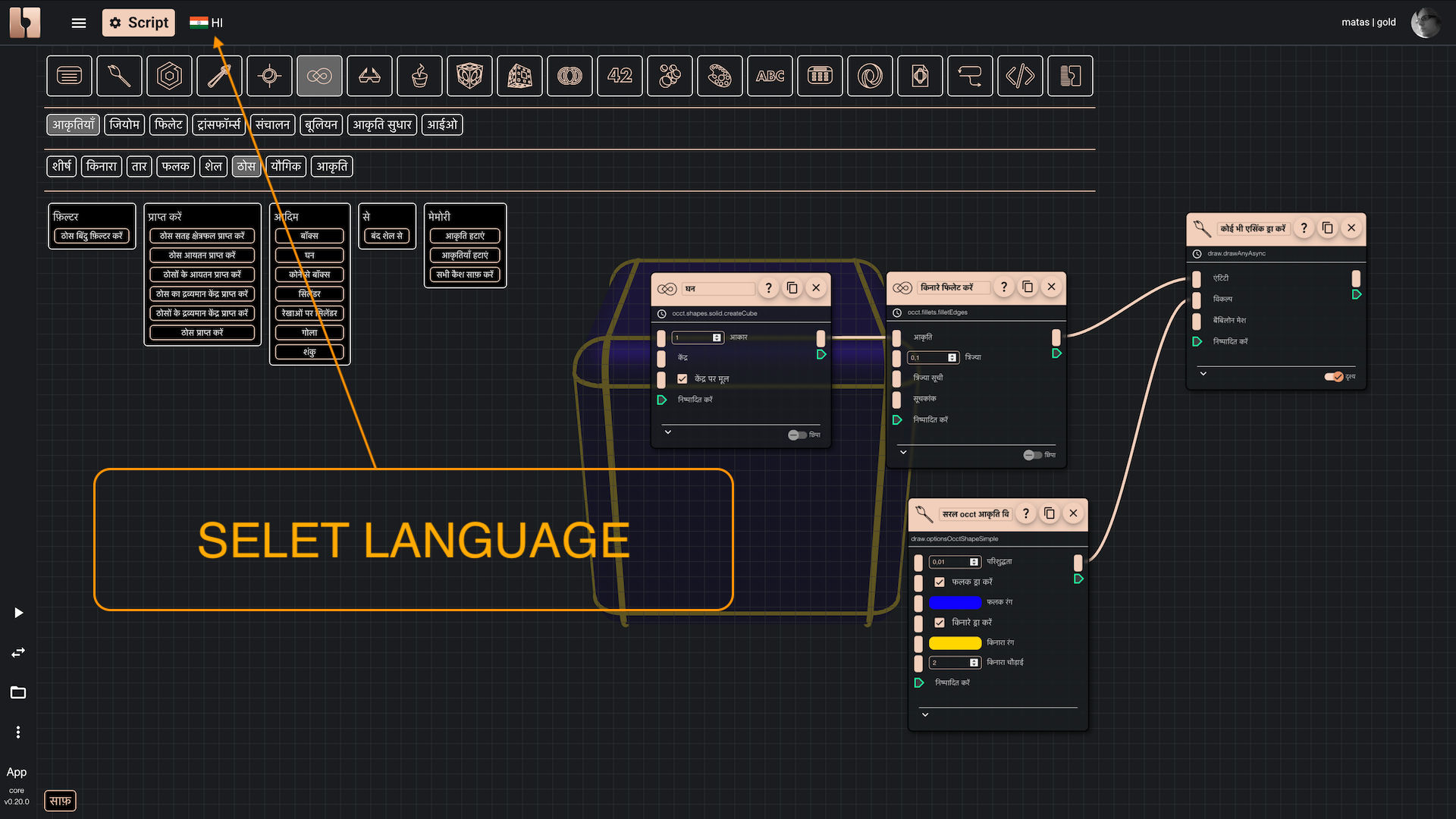We are glad to announce that all components of Rete & Blockly are now translated to new languages.
Apr 8, 2025
by Matas Ubarevicius
Next to English language we now support Spanish, Hindi, Arabic, Chinese, French and Lithuanian languages. You'll also find a new button that will activate the language of your preference.

Image showing a script stone symbolizing the translation of the editors.
Imagine a world where the language you speak doesn’t limit your ability to create, design, and innovate. A world where children from Buenos Aires to Beijing can explore the wonders of 3D design in their own tongue. Bitbybit makes this reality. The platform’s Rete and Blockly visual programming components for 3D CAD geometry, originally available in English, have now been translated into Spanish, Hindi, Arabic, Chinese, French, and Lithuanian. This exciting development is more than just a technical update — it’s a transformative step toward making technology and education accessible to millions worldwide.

This picture shows where to find the button which can switch to your language.
Why Language Matters in STEM
Language is a powerful tool. It’s how we connect, learn, and express ourselves. But when educational resources are locked behind a language barrier, they become unreachable for many. In STEM (Science, Technology, Engineering, and Mathematics) fields, where innovation drives progress, this issue is especially pressing. Complex concepts like coding and design can already feel daunting—add the challenge of navigating them in a foreign language, and they can seem insurmountable. By translating its visual programming tools into multiple languages, Bitbybit is tearing down these walls, inviting a global audience to engage with STEM on their own terms.
Empowering Kids with Intuitive Learning
For kids, learning to program can be like building with digital bricks. Visual programming editors like Rete and Blockly make this process intuitive by replacing lines of code with drag-and-drop blocks. This approach lets young learners focus on logic and creativity rather than wrestling with syntax. Now, with these tools available in languages like Spanish, Hindi, and Arabic, the experience becomes even more seamless. A child in Cairo can experiment with 3D geometry in Arabic, while a peer in Paris does the same in French. This not only boosts confidence but also sparks curiosity, making STEM approachable for kids who might otherwise feel excluded.
Take, for example, a young student in rural India. Hindi is her first language, and English feels distant and unfamiliar. Before this translation effort, exploring 3D CAD might have been a struggle. Now, with Bitbybit’s Hindi interface, she can dive into design, creating shapes and structures in a language she knows best. This isn’t just about convenience—it’s about empowerment, giving kids everywhere the chance to see themselves as future innovators.
Unlocking Parametric Design for All
Parametric design—a method of defining objects using variables and relationships—is a cornerstone of modern 3D CAD. It’s a powerful skill used in engineering, architecture, and product design, but it’s also abstract and challenging to learn. Visual programming simplifies this by letting users manipulate parameters through a graphical interface. When that interface speaks your language, the learning curve flattens even more. By making parametric design accessible in native languages, Bitbybit is equipping users with tools to tackle advanced concepts without the added burden of translation.
In a world that’s increasingly connected yet wonderfully diverse, access to technology shouldn’t hinge on the language you speak. Bitbybit is dedicated to create accessible design tools. We believe that the future of STEM is multilingual, and it’s brighter than ever.
We will add more languages to Bitbybit shortly. Community feedback helps shape these translations. You can also offer your suggestions via pull requests to our GitHub repo here:
